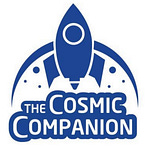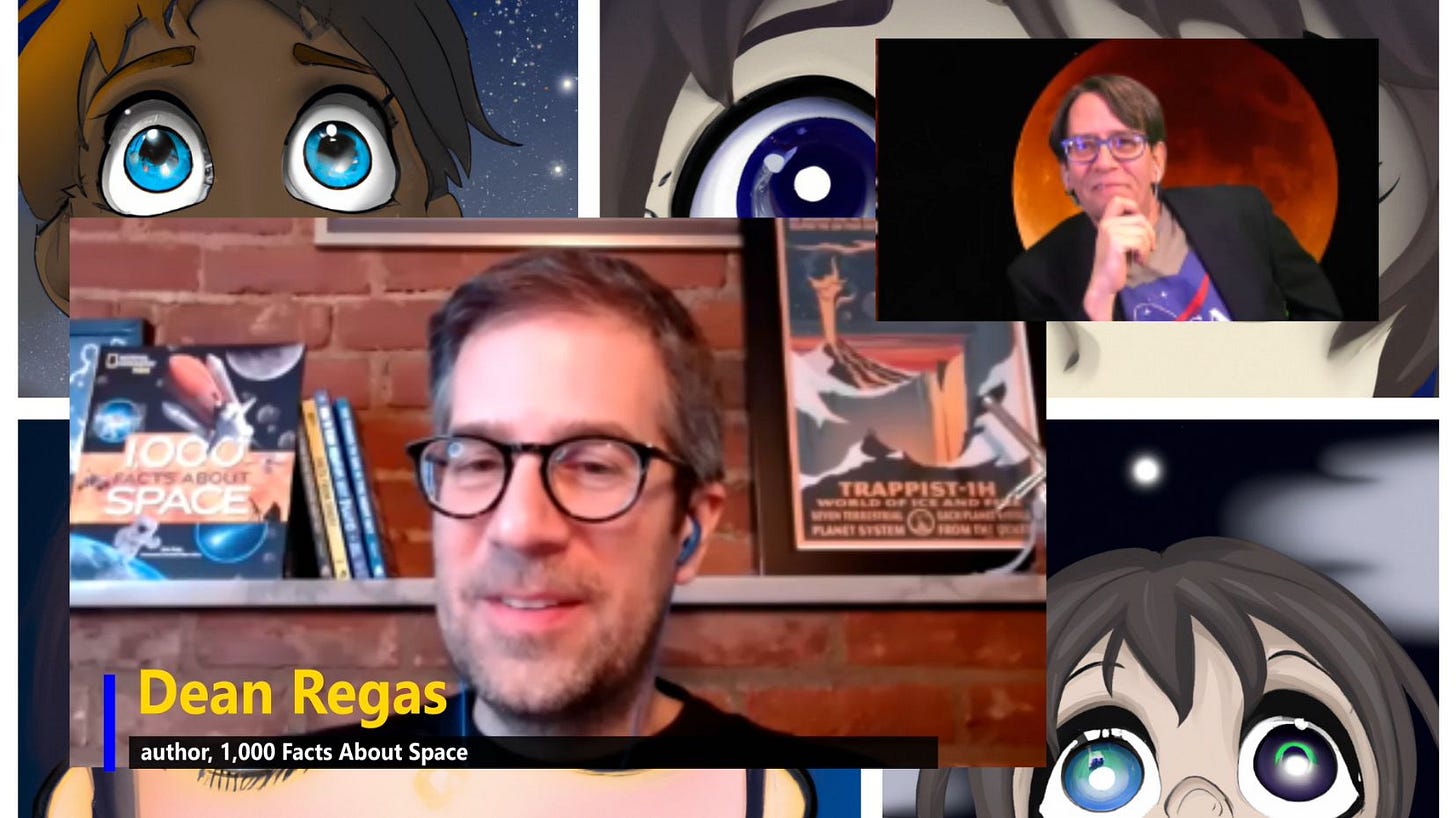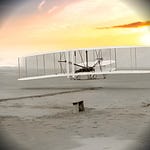Hello everyone!
This week on The Cosmic Companion, we look at Teaching Kids About Space, as we welcome astronomer Dean Regas to the show. He is the author of a new book, 1,000 Facts About Space from National Geographic Kids.
In years past, students didn’t have a lot of resources for learning about the stars and planets. They would have to rely on books, or perhaps a telescope if they were lucky. But all that began to change in the 20th century.
In the 1920s and 30s, planetariums began to pop up in schools and museums around the world. These dome-shaped theaters make use of special projectors, simulating the night sky, providing viewers with an up-close and personal look at the stars and planets. This was a game changer for astronomy education, as it allowed kids and adults a means to experience the night sky in a way that wasn’t possible before that time.
Listen to the podcast version of this episode here or watch it as a video!
And planetariums weren’t the only new tool for teaching astronomy. In the 1960s and 70s, the space race between the United States and the Soviet Union had kids looking to the stars with renewed interest. NASA’s Apollo program and the launch of the Hubble Space Telescope, also fueled a renewed interest in space science and astronomy education.
With the advent of the internet, online resources have become readily available, including virtual planetariums, online simulations and interactive games that allow children to learn about the Cosmos in a fun and engaging way.
Educators now get a 25% discount on VIP subscriptions for as long as your paid subscription is active! Just sign up with a .edu email address. (Are you an educator without a .edu address? Contact us to confirm your status!)
Today, children’s astronomy education is more interactive and accessible than ever before. With the help of planetariums, remote telescopes, and new interactive 3D learning environments, kids can explore the universe from the comfort of their own homes. Check out our own virtual learning space at thecosmiccompanion.space.
Next up, we talk with Dean Regas. He is an astronomer at Cincinnati Observatory. His new book, 1,000 Facts About Space, is hot off the presses from National Geographic.
In the future, kids will have access to even more advanced technology for learning about stars, planets, and all those other fun little thingies in the sky. Virtual reality headsets have the ability to transport them to distant galaxies, while augmented reality apps allow children from light-polluted cities to see constellations in the night sky in real time.
Generative AI, similar to Chat GPT and Dall-E, will soon be providing guided interactive tours of the Universe. These new technologies will make learning about astronomy more immersive, interactive, and popular than ever before.
As we continue to explore and discover more about our universe, astronomy education for children will also become more diverse, inclusive and culturally sensitive, incorporating perspectives from cultures and communities around the globe.
With increasing recognition of climate change, educating students about the impact of human activities on the planet becomes crucial. In addition, understanding the role of space exploration and astronomy in recognizing and mitigating environmental changes to Earth grows even more vital.
In the future, children will have the opportunity to explore the Universe in ways that we can’t even imagine today.
Whether you’re a student in a classroom, an educator, or a curious kid at home, the sky is the limit when it comes to learning about the stars and planets! Actually… This is astronomy. So… The sky is just the beginning!
Next week on The Cosmic Companion, we look at traveling to the Moon from Apollo to Artemis, talking with Andy Saunders. His new book, Apollo Remastered, is filled with newly-enhanced images, giving readers an unprecedented look at the legendary Apollo Program. Here’s a clip from that interview.
If you enjoyed this episode, please subscribe, follow, share, and tell your friends about The Cosmic Companion. If you are into skywriting, feel free to blaze it across the sky. As long as you use environmentally-friendly chemicals, of course.
What’s that you say? You want to make sure you get EVERY episode of The Cosmic Companion in your email inbox every Saturday? Wow! Have I got good news for you. Take a trip on over to thecosmiccompanion.net and sign up for our newsletter, and all your dreams will come true. You know, at least the ones having to do with seeing every episode of The Cosmic Companion.
Clear skies!
James













Share this post